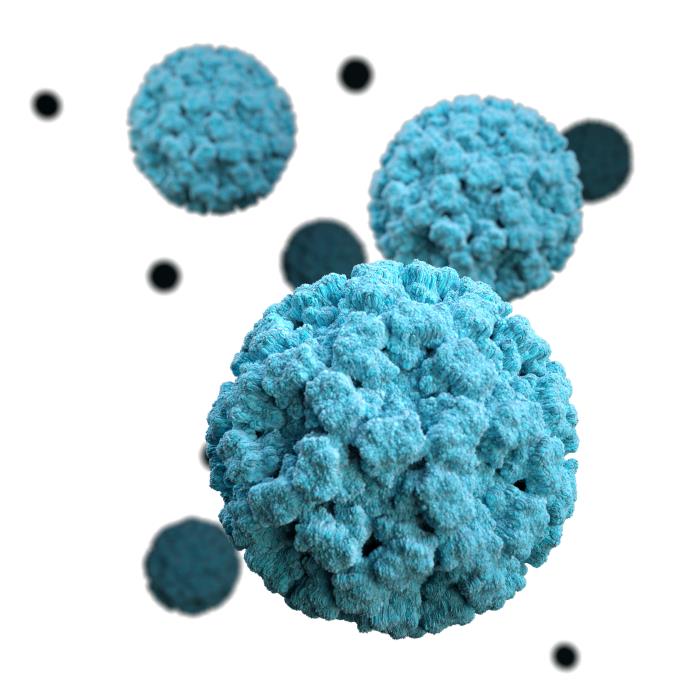
Human norovirus is the leading cause of foodborne illness in the world. Of the many challenges associated with this virus, one involves being able to tell if a given viral particle is capable of infecting a host, as a number of particles in a given sample are “defective” and unable to infect a host. Traditionally, the best way to determine this for viruses at a lab bench is to infect a set of proxy animal cells grown in a flask, a method called animal tissue culture. However, for over 4 decades attempts to cultivate the virus had failed. Two recent breakthrough systems have been reported; however, both still have challenges that prevent them from being widely utilized, and would likely be too costly for routine testing/detection application.
In place of infecting lab-grown animal tissues, researchers have commonly turned to utilizing a technique that amplifies and quantifies a portion of the genome of the virus. However, this method does not selectively count the genomes that represent infectious virus particles from defective virus particles. To determine if a particle is infectious, researchers have developed receptor binding assays, where viral particles are exposed to receptors—in this case, carbohydrates associated with one’s blood type that have traditionally been implicated in norovirus infection.
Presumably, only particles capable of binding these receptors would be capable of infecting host cells. Although this method does not account for all potential defective particles, it historically had shown promise. However, the carbohydrates required have numerous drawbacks, as they are hard to chemically modify to make useful, expensive, and not able to bind all norovirus strains.
Recently, alternative ligands known as “aptamers” had been created that bind a broad group of human norovirus strains. Aptamers are short, single strands of nucleic acid that fold into unique 3D structures and bind target molecules. These aptamers are cheap, easily chemically synthesized and modified, and are quite stable. Previous reports had suggested that some aptamers may be capable of only selectively binding proteins that are intact. This was typically performed for aptamers binding protein targets that had been denatured by heat. Because the human norovirus capsid is also composed of just protein, a study was conducted to see if a selected human norovirus aptamer was able to effectively be used like a receptor to determine which norovirus particles in solution are infectious.
In a recent article, Moore et al. (2016) investigated the ability of a human norovirus aptamer to selectively bind norovirus capsids that were intact. To do this, Moore et al. subjected norovirus capsids to different heat treatments and compared the intensity of aptamer binding to receptor binding (an indicator of a viral particle’s ability to infect a cell). The aptamer performed very similarly to the receptor, while an antibody targeting norovirus did not. These results suggest that aptamers show promise to be used in inexpensive, in vitro methods to discriminate and study infectious human norovirus particles.
Future work will focus on further refining and testing the applicability of this aptamer for infectivity discrimination with particles subjected to other disinfection treatments. This aptamer in the future may serve as a valuable tool for researchers to use to identify effective norovirus disinfectants and better detect norovirus particles that are a threat.
These findings are described in the article entitled Human Norovirus Aptamer Exhibits High Degree of Target Conformation-Dependent Binding Similar to That of Receptors and Discriminates Particle Functionality, recently published in the journal mSphere. This work was conducted by M. D. Moore, B. G. Bobay, B. Mertens, and L. A. Jaykus from North Carolina State University.









